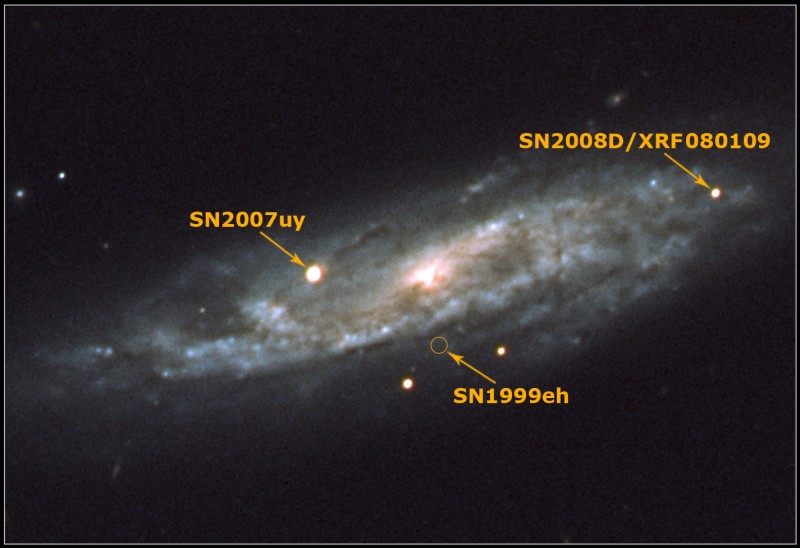
|
Credit: A. de Ugarte Postigo (ESO) et al.,
Dark Cosmology Centre
(NBI,
KU),
Instituto de Astrofísica de Andalucía (CSIC), University of Hertfordshire
Explanation:
The stellar explosions known as
supernovae are
among the most
powerful events in the universe.
Triggered by the collapsing core of a massive star or the
nuclear demise of a white dwarf,
supernovae occur
in average spiral galaxies only about once every century.
But the remarkable spiral galaxy NGC 2770 has lately
produced more than its fair share.
Two still bright supernovae and the location of a third,
originally spotted in 1999 but now faded from
view, are indicated in this image of the edge-on spiral.
All three supernovae are now thought to be of the core-collapse variety,
but the most recent of the trio,
SN2008D, was
first
detected by the
Swift
satellite at more extreme energies as an
X-ray flash (XRF) or
possibly a low-energy version of a
gamma-ray burst on January 9th.
Located a
mere
90 million light-years away in the northern
constellation Lynx, NGC 2770 is now the closest galaxy known
to host such a
powerful supernova event.
Instituto de Astrofísica de Andalucía (CSIC), University of Hertfordshire
|
January February |
| ||||||||||||||||||||||||||||||||||||||||||||||||
NASA Web Site Statements, Warnings, and Disclaimers
NASA Official: Jay Norris. Specific rights apply.
A service of: LHEA at NASA / GSFC
& Michigan Tech. U.
Based on Astronomy Picture
Of the Day
Publications with keywords: supernova - gamma-ray burst
Publications with words: supernova - gamma-ray burst
See also:
